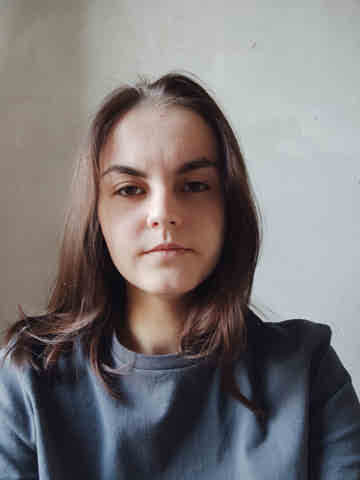Library of materials on the topic of graduation work
-
Analysis of emotion recognition methods based on photographic images
Authors: A. Semenova, M. Belinskaya, V. Pavlysh
Description: The paper considers the currently relevant method of detecting a face in an image. Emotion categorization models are defined: discrete, multidimensional and hybrid. Classical methods of emotion recognition by key points, as well as methods based on deep learning, are considered.
Source: Proceedings of the VII International Scientific and Technical Conference "Modern Information Technologies in Education and Scientific Research" (SITONI-2021)
-
Overview of the universal database management tool for the Flask framework
Authors: M. Belinskaya, T. Kravets
Description: The article discusses the Flask web framework, which is designed for developing web applications in the Python programming language and SQLAlchemy, a set of Python SQL tools that gives developers access to a database. It also describes how to create a database model.
Source: Materials of the XIV International Scientific and Technical Conference "Informatics, Control Systems, mathematical and computer modeling" (IUSMKM-2022).
-
WEB DEVELOPMENT TOOLS IN THE PYTHON PROGRAMMING LANGUAGE
Authors: M. Belinskaya, T. Kravets
Description: The article discusses the possibilities of developing web applications using the Python programming language. Various frameworks for web application development, such as Django, Flask, Pyramid, Tornado, are also considered. And the Flask framework is considered in more detail.
Source: Materials of the XIV International Scientific and Technical Conference "Informatics, Control Systems, mathematical and computer modeling" (IUSMKM-2023).
-
Automatic restoration of diacritics for languages with limited resources
Authors: Guy De Pau, Peter Waiganjo Wagacha, Gilles-Maurice de Shriver
Description: The orthography of many languages with limited resources includes characters marked with diacritics. These characters, which go beyond the standard Latin encoding, are often represented in digital language resources as their unmarked equivalents. This makes it difficult to compile a corpus, since these languages, as a rule, do not have the advantages of large electronic dictionaries for restoring diacritics. This article describes experiments with a machine learning approach that is able to automatically restore diacritics based on a local graphemic context. We apply this method to the African languages Chiluba, Gikuyu, Kikamba, Maa, Sesoto sa Leboa, Tshivenda and Yoruba and compare it with experiments in Czech, Dutch, French, German and Romanian, as well as Vietnamese and Pinyin Chinese.
Source: ReserchGate, Guy De Pau, Peter Waiganjo Wagacha, Gilles-Maurice de Shriver, Automatic restoration of diacritics for languages with limited resources, access link: https://www.researchgate.net/publication/221151933_Automatic_Diacritic_Restoration_for_Resource-Scarce_Languages
-
On the issue of the presentation of multilingual texts with diacritics
Authors: D.E. Kondratiev, O.V. Tikhonova
Description: The article describes questions about the presentation of multilingual texts with diacritics
Source:D.E. Kondratiev, O.V. Tikhonova, ON THE ISSUE OF THE PRESENTATION OF MULTILINGUAL TEXTS WITH DIACRITICS, access link:https://cyberleninka.ru/article/n/k-voprosu-o-predstavlenii-mnogoyazychnyh-tekstov-s-diakriticheskimi-znakami
-
Automatic restoration of diacritics using neural machine translation based on a transformer model for East-Central European languages
Authors: Lazlo John Lucky, Zijian Victor Yang
Description: Over the past few years, the size of texts written on mobile devices has suddenly increased. People often type messages without diacritics, so more and more corpora containing texts without accents are being created on the Internet. This fact causes difficulties in natural language processing (NLP) tasks. The accent restore application could clean and prepare the corpus for data training of higher-level NLP tools.
Source:Lazlo John Lucky, Zijian Victor Yang, automatic restoration of diacritics using neural machine translation based on a transformer model for East-Central European languages, access link:https://ceur-ws.org/
-
Diacritics in modern Russian and Italian languages: origin, problems and comparative features
Authors: Blinova Olga Alekseevna
Description:The article tells about diacritics in the Russian language
Source:Blinova Olga Alekseevna, Diacritics in modern Russian and Italian languages: origin, problems and comparative features, access link: https://moluch.ru/conf/phil/archive/333/15076/
